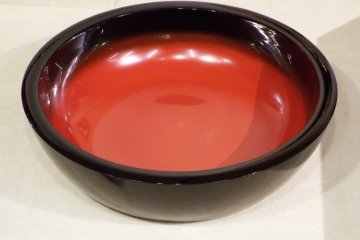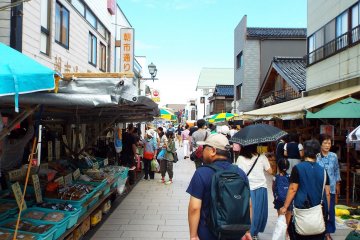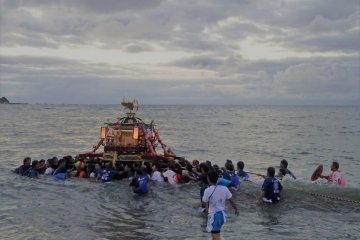Young men dressed in women's clothes and with make-up on their faces carry a portable shrine into the ocean at Sodegahama Beach. Then small children on shore pull long ropes attached the shrine back and forth. This is the Okutsuhime Shrine Festival, the first in a series of four shrine festivals in Wajima. What a spectacle to watch; full of excitement and great fun.
Late summer is a perfect time to visit the Wajima area of the Noto Peninsula to enjoy some great spectacle at the Wajima Grand Festivals. Yes, it is not one but four festivals related to local shrines that take place from August 22 to 25 each year.
The festive activities start with the Okutsuhime Shrine Festival. Here is the legend that gave reason to this festival:
A Shinto God-Princess (hime means princess in Japanese) lived on Hegura Island about 50 km off the coast of the Noto Peninsula, Her Shinto God-Prince lived on the land in Wajima. They were very much in love but sadly, they were allowed to meet only once a year.
The fisherman of Wajima wanted to help the lovers find each other by carrying giant lanterns to brighten the night. Giant candles became giant lanterns (kikiro) in the shape of votive candles. Well, it has been said that they get intimate and the meeting of the two results in the birth of a new god.
Where there is love, there is jealousy. The God-Prince got jealous of the young, healthy local men who carried the portable shrine (mikoshi) with the God-Princess. To attract the wrath of a Shinto God is a terrible thing. Hence, the local men started to dress as women, and wore make-up like women. They still do this to this day making for a fun atmosphere.
After the Shinto ritual, a group of local children and teenagers performs a vigorous taiko drumming show.
The mikoshi is carried from Okutsuhime Shrine to Sodegahama Beach, where a Shinto priest conducts a purification ritual before the shrine enters the water of the ocean.
Then the action starts for good: the young men carry the shrine down the beach lined to both sides for local nobleman, then through a Shinto gate and into the water of the ocean.
A rope is attached to the mikoshi which is held by young children who aim to prevent the men from entering the water.
Like this the mikoshi is carried in and out of the ocean many times, until finally it is taken back ashore and brought to a temporary shrine for one night. The locals must enjoy this fun event a lot because they repeat it a second time of the following day.
Let legend by legend, the locals celebrate this shrine festival at the end of the fishing season to say thank you to the Shinto-Gods (kami-sama) for helping them to catch a lot of fish, stay accident free, and bring good fortune to their homes.
If you want to search for the princess, then make a trip to Hegura Island! It is just 2 km by 1 km in size and less than 100 people live there. A ferry takes locals and guests from Wajima Port to Hegura Port in 1h30min. Beware! There is only one ferry in the morning going to the island and one ferry in the evening coming back to Wajima. What to do if you get bored of princess hunt? Locals say that Hegura Island is a good spot for angling and bird-watching!












